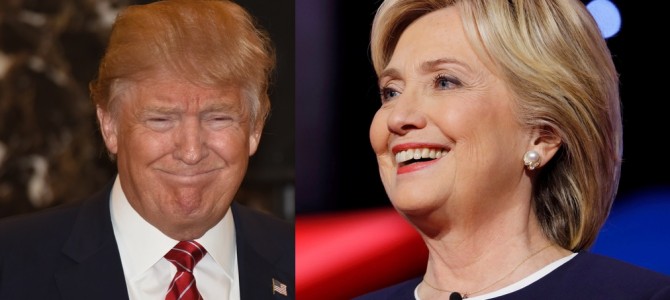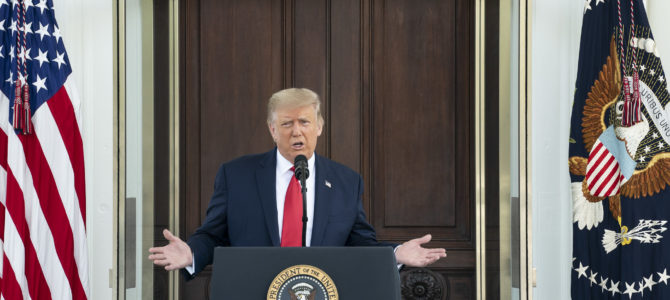The conservative blogosphere is lighting up again with accusations of polling bias against Republican presidential candidate Donald Trump in his race against Democratic opponent Hillary Clinton. However, Trump supporters should avoid giving into this temptation to assume unfavorable results must be biased results. Clinton really is leading Trump, and by nearly 6 percentage points.
The blogospherian argument goes something like this: Clinton is leading Trump by 5 to 7 points in certain polls because the pollsters oversampled or over-weighted Democrats by about 5 to 7 points. If the polls are “corrected” to include fewer Democrats then the race is actually tied, they say.
For instance, one blogger argues that a recent CBS News poll inflated the number of Democrats in the poll, comprised of 28 percent Republicans and 35 percent Democrats. Citing one pollster’s calculation, she thinks party identification in the United States is closer to parity, with 28 percent Republicans and only 29 percent Democrats rather than a seven-point Democratic advantage. She reasons that if you erase the partisan gap that would erase Clinton’s six-point lead over Trump.
For Trump supporters, this is a tempting narrative to believe. But this simply isn’t so. The fact is there just are more Democrats out there than Republicans, and this has largely been the case at least since the New Deal. That obviously doesn’t mean Democrats always win, but it’s unwise to assume a pollster is biased because its sample included more Democrats than Republicans.
HuffPollster, which aggregates hundreds of polls across nearly 100 different pollsters, finds that averaging across 2016 polls, 34.8 percent of Americans identify as Democrats and 28.7 percent identify as Republicans—roughly a six-point Democratic advantage. This is very similar to the CBS poll’s partisan composition. Democrats maintain this advantage even among the national electorate. HuffPollster finds on average that among likely voters 38 percent are Democrats and 32.9 percent are Republicans—a 5.1-point Democratic advantage.
Furthermore, not a single major poll conducted since the beginning of June has found Trump ahead. Since May, Trump only led in three of the 24 polls found at RealClearPolitics (RCP). As of today, the RCP polling average shows Clinton with +5.8 percentage point lead over Trump. Thus, Clinton’s lead is not due to one biased poll; polls including Rasmussen (Clinton +5), CBS (+6), Monmouth (+8), CNN (+5), and Fox (+3) all find Clinton leading Trump.
These accusations of polling bias are strikingly similar to what happened in 2012 with “UnSkewedPolls.com” where some folks claimed the polls were unfairly sampling too many Democrats and thus giving an unmerited advantage to Barack Obama over Mitt Romney. But at the end of the day, the polls were largely correct and Obama handily won.
It’s easy to give into the temptation and assume that polls with unfavorable results must be biased. In some elections, polls have been considerably off. But by and large, it’s usually better to assume that results averaged across multiple polls from a variety of polling organizations are probably pointed in the right direction. Thus, if people don’t like poll results, they may find their interests better served by taking action to persuade other voters to their point of view, rather than cry bias.









